




 [Radtour Nord2]
[Radtour Nord2]
Dorsten's History - Station 10: Furst Leopold Colliery
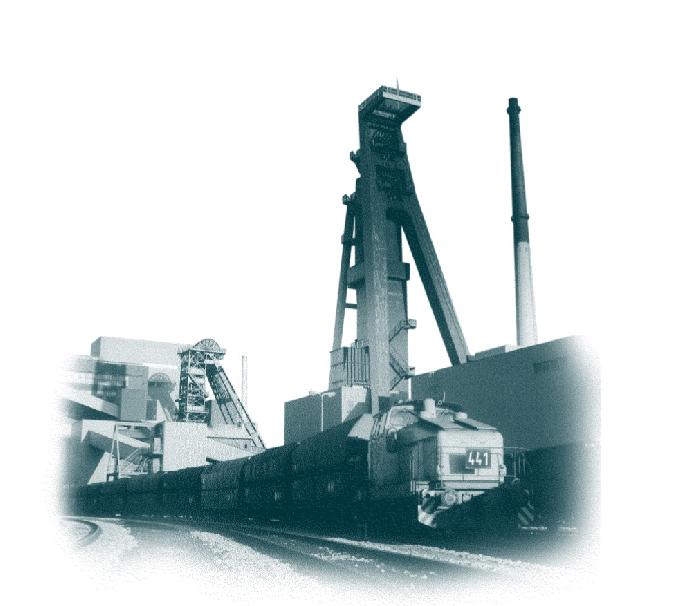
Coal has shaped the face of the grown "Small hanseatic town at the Lippe" in the 20th century. Interested inhabitants of Dorsten - many originating from the 1200 families that still live from coal today - are pleased about the new history station in front of the "Zechentor on Halterner Strasse", a communal work in memory of the work and life of the 4000 miners that used to work here.
For the opening of the FilmSchauPlätze 2002 under the patronage of the North Rhine-Westphalian Prime Minister, an extended entertainment program was organized. Around 10.30 p.m., Dorsten experiences his first open-air cinema screening on the giant screen.
|
The chemist Friedrich Bergius receives a patent for the liquefaction of coal.
| _ |
1913 |
_ |
The first coal is mined about two years after the sinking begins. |
|
The global economic crisis leads to a significant increase in unemployment in the Ruhr area.
| _ |
1930 |
_ |
After the mining company Trier m.b.H. was closed, the owner Hoesch also acquires the Baldur colliery in Holsterhausen. |
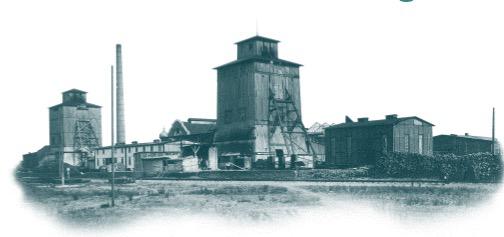 An older photo |
1931 |
_ |
On June 16, the mines in Hervest and Holsterhausen will be connected underground. After that, the Baldur colliery will be shut down and the entire mining process on Prince Leopold will be brought to light. | |
|
After the end of World War II, around 96% of the living space in the Ruhr area cities was damaged or destroyed
| _ |
1945 |
_ |
Allied bombing is wreaking havoc on the surface. If the dewatering pumps fail, the underground mine building is threatened with flooding. |
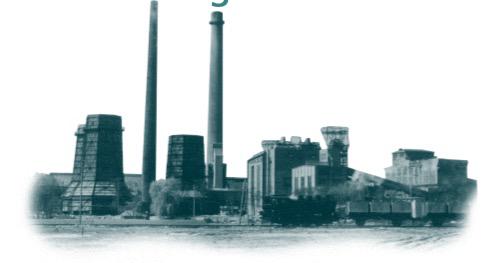 Anfang der 50er Jahre |
1970 |
_ |
Ruhrkohle-AG, founded in 1968, takes over the mine from Hoesch-AG. | |
|
The last small mine in the area is the Egbert colliery in Herbede.
| _ |
1976 |
_ |
|
|
Die ARD zeigt den ersten „Tatort“-Krimi mit Kommissar Schimanski (Götz George). ARD shows the first “Tatort” crime thriller with Commissioner Schimanski (Götz George). | _ |
1981 |
_ |
After the breakthrough of a 9 km long mining tunnel, the Wulfen coal field is connected to Fürst Leopold. |
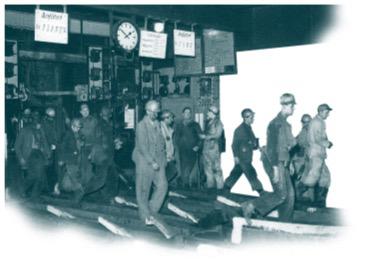 Shift change |
1983 |
_ |
The completion of the coal washing and sorting plant with a capacity of 30,000 t guarantees a good mixture of the coal from the different seams. | |
|
Coal compromise: Public aid is to be halved by 2005, and the number of employees is to be reduced from 84,000 to 36,000.
| _ |
1997 |
_ |
Leopold's miners demonstrated for many weeks with a vigil to keep their jobs safe. |
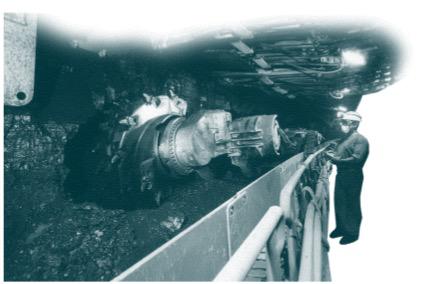 Coal mining with modern technology |
1998 |
_ |
By merging the Westerholt and Fürst pits Leopold / Wulfen, the Lippe mine is built. | |

|
2001 |
_ |
After 88 years, production at the Fürst Leopold site is discontinued. |
[zurück]
Daten und Fakten
Eröffnung - 07. Juli 2002
Adresse - Haupteingang, Halterner Str.
Geodaten - 51°40'15.54 6°59'01.33
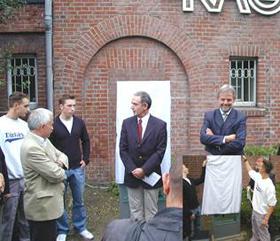
Two trainees from the Fürst Leopold mine are helping to unveil the board (small picture)
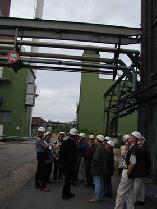
Open day - the visitors are guided through the shaft system on the surface.

The factory orchestra and miners' choir greet the numerous guests with a happy ...

Glück auf!
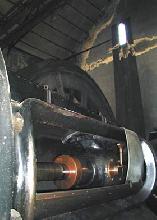
The huge pistons of the steam engines transfer the power to the large drive wheel. The wire rope on which the hoist cage hangs high from the headframe runs over this.

